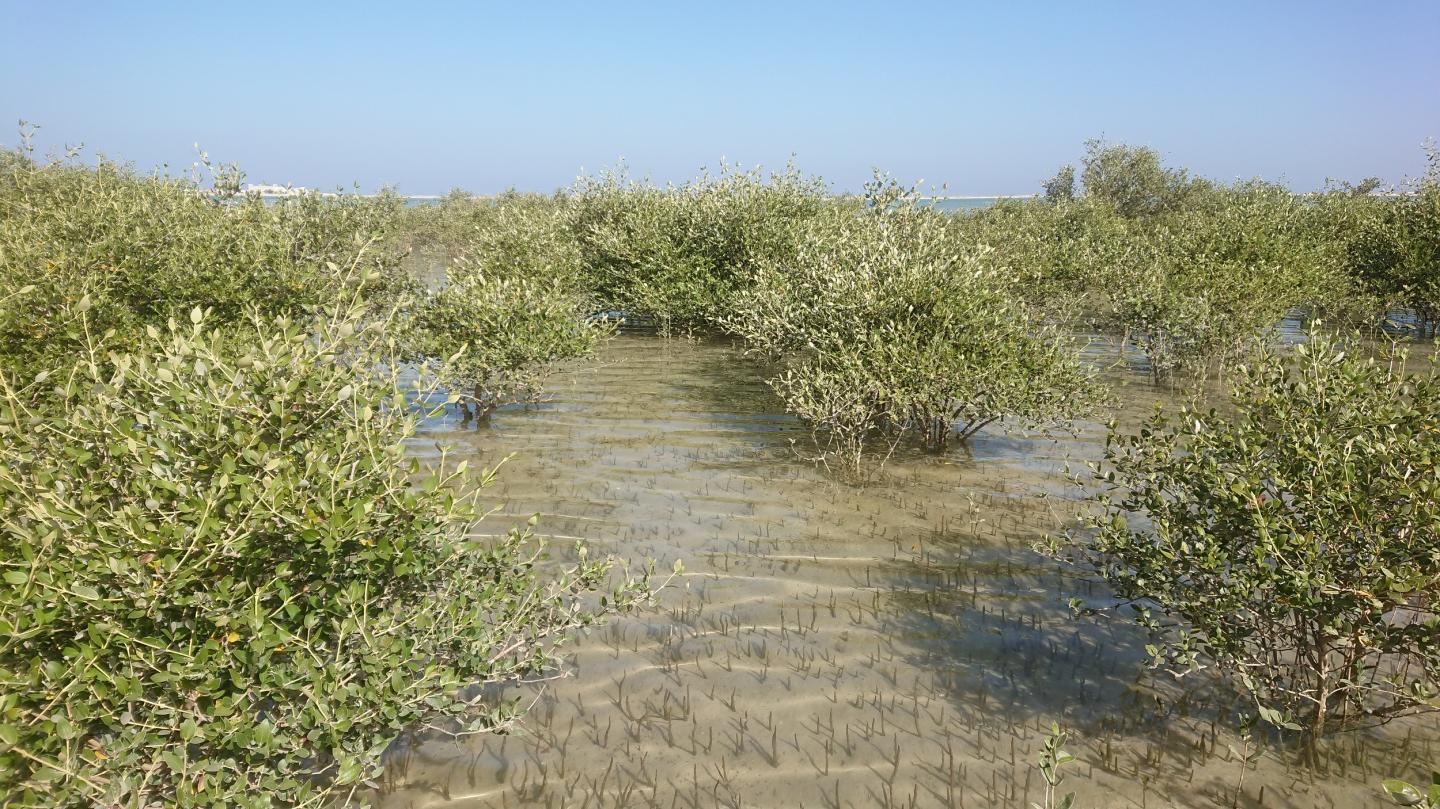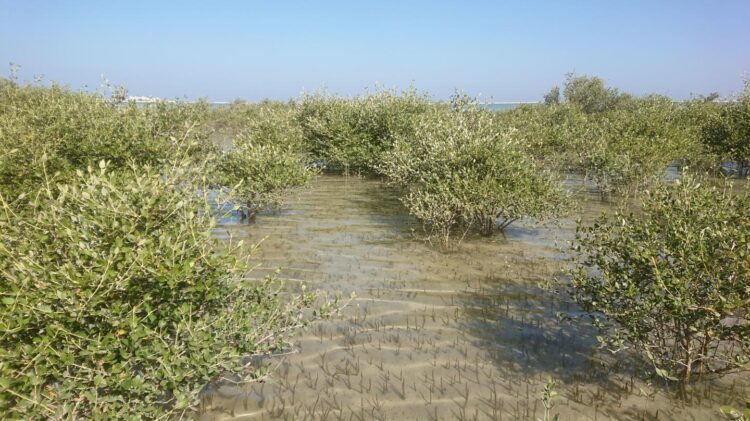Study points to sudden decrease of precipitation as cause

Credit: © Valeska Decker/University of Bonn
Most of the mangrove forests on the coasts of Oman disappeared about 6,000 years ago. Until now, the reason for this was not entirely clear. A current study of the University of Bonn (Germany) now sheds light on this: It indicates that the collapse of coastal ecosystems was caused by climatic changes. In contrast, falling sea level or overuse by humans are not likely to be the reasons. The speed of the mangrove extinction was dramatic: Many of the stocks were irreversibly lost within a few decades. The results are published in the journal Quaternary Research.
Mangroves are trees that occupy a very special ecological niche: They grow in the so-called tidal range, meaning coastal areas that are under water at high tide and dry at low tide. Mangroves like a warm climate; most species do not tolerate sea surface temperatures below 24 °C (75°F). They are tolerant to salt, but only up to a tolerance limit that varies from species to species. “This is why we find them nowadays mostly in regions where enough rain falls to reduce salinization of the soil,” explains Valeska Decker of the Institute for Geosciences at the University of Bonn, the lead author of the study.
Fossil finds prove that there used to be many mangrove lagoons on the coast of Oman. However, some 6,000 years ago these suddenly largely vanished – the reasons for this were previously disputed. Over the past few years, Decker traveled several times to the easternmost country of the Arabian Peninsula to pursue this question for her doctoral thesis. With the support of her doctoral supervisor Prof. Gösta Hoffmann, she compiled numerous geochemical, sedimentological and archaeological findings into an overall picture. “From our point of view, everything suggests that the collapse of these ecosystems has climatic reasons,” she says.
Low pressure trough shifted to the south
Along the equator there is a low pressure trough, the Intertropical Convergence Zone, which is situated a little further north or south depending on the season. The Indian summer monsoon, for example, is linked to this zone. It is believed that about 10,000 years ago this zone was much further north than today, which meant the monsoon affected large parts of the Arabian Peninsula. Just over 6,000 years ago this low-pressure trough then shifted to the south, but the reason for this and how fast is still not completely clear.
“That this was the case has been well documented for several years,” explains Decker. “Our results now indicate that this climate change had two effects: On the one hand, it caused salinization of the soil, which put the mangroves under extreme stress. On the other hand, the vegetation cover in the affected areas decreased in general due to the greater drought.” This increased erosion: The wind carried large amounts of the barren soil into the lagoons. These silted up and successively dried up. The whole thing happened surprisingly fast: “The ecosystems probably disappeared within a few decades,” stresses Decker. According to previous studies, the environmental changes were gradual. The mangrove ecosystems struggled till a certain threshold was reached and then collapsed within decades. Nowadays, the only mangroves in Oman are those of a particularly robust species and are found only in a few places.
She was able to exclude other possible causes for the disappearance of the mangroves in her study. For example, the researchers found no evidence of a drop in sea level 6,000 years ago that could have triggered the mangrove extinction. “Archaeological findings also speak against a man-made ecological catastrophe,” she says. “It is true that there were humans living in the coastal regions who used the mangroves as firewood. However, they were nomads who did not build permanent settlements. This meant that their need for wood was relatively low – low enough to rule out overuse as a cause.”
Decker and her colleagues now want to further investigate how much the annual precipitation changed and what impact this had on the region. To this end, the researchers plan to study the pollen that has persisted in the lagoon sediment for thousands of years. They want to find out how the vegetation changed as a result of the drought. The results could also be relevant for us: In many regions of the world, the climate is changing at a dramatic pace. Germany has also suffered increasingly from long droughts in recent years. Foresters are therefore already planning to plant more drought-resistant species in this country; this is a consequence of climate change that may leave long-term marks in the history of vegetation.
###
Publication: Valeska Decker, Michaela Falkenroth, Susanne Lindauer, Jessica Landgraf, Zahra al-Lawati, Huda al-Rahbi, Sven Oliver Franz and Gösta Hoffmann: Holocene mangrove ecosystems changes along the coastline of Oman; Quaternary Research; DOI: 10.1017/qua.2020.96
Media Contact
Valeska Decker (University of Bonn)
[email protected]
Original Source
https:/
Related Journal Article
http://dx.





